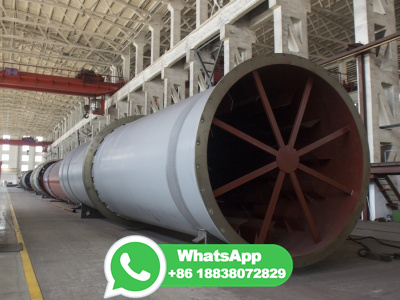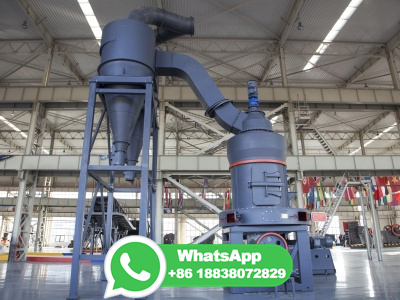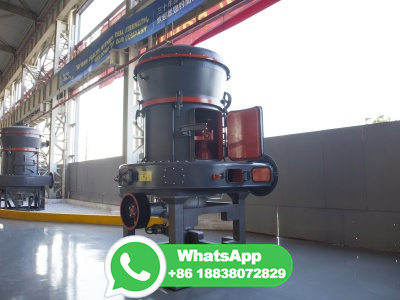
WEBNov 17, 2011 · A comparative analysis is made of greenhousegas emissions by alternative cokeless metallurgical processes for making pig iron, metallized pellets, and steel. The concept of technological greenhouse number is used in the analysis. Specific data obtained as part of an environmentalenergy analysis of the given processes show that DAV .
WhatsApp: +86 18203695377
WEBJan 26, 2024 · A study by Rice University researchers published in the journal ACS Applied Materials Interfaces found that graphene derived from metallurgical coke, a coalbased product, could serve not only as a reinforcing additive in cement but also as a replacement for sand in concrete. "This could have a major impact on one of the biggest industries in ...
WhatsApp: +86 18203695377
WEBJul 6, 2023 · About Metallurgical Coke. Metallurgical coke, also known as met coke or coke breeze, is a carbonaceous material derived from the destructive distillation of coal in the absence of air. It is a hard, porous, and carbonrich material with high carbon content (typically ranging from 85% to 90%). Production Process.
WhatsApp: +86 18203695377
WEBMay 3, 2023 · Metallurgical coke is available in 30 micrometer powder 20 cm lump sizes. Metallurgical coke is used in conductive flooring, friction materials, foundry coatings carbon raisers, corrosion materials, reducing agents, heat treatment, ceramic packing media, electrolytic processes, oxygen exclusion is also use for drilling appliions. .
WhatsApp: +86 18203695377
WEBFeb 20, 2023 · In addition, bituminous coal is often upgraded to coke in order to satisfy the requirements for some metallurgical processes. The coal tar pitch resulting from this upgrading process is repurposed as a binder in anodes that are used in the current aluminium industry. Petroleum coke, produced from the heaviest part of crude oil, which .
WhatsApp: +86 18203695377
WEBNov 1, 2019 · The sulfated iron oxide, Fe2O3/SO4(2) was found to be an effective alyst for coal liquefaction when used in small concentrations (< wt % iron); its use resulted in an 86 wt % (maf basis ...
WhatsApp: +86 18203695377
WEBDec 9, 2023 · It is a noncoking ironmaking process in which noncoking coal is used as the main energy source to reduce ferrous oxides and achieve slagiron separation in a hightemperature melting state to obtain carboncontaining iron melt. In the 1960s, the Swedish metallurgist S. Eketorp called it smelting reduction in order to distinguish this method ...
WhatsApp: +86 18203695377
WEBApr 24, 2024 · Metallurgical coal is a lowash, lowsulfur bituminous coal used in the blast furnace steel manufacturing process once it has been converted into coke. Coke is a strong, dense, and nearly pure carbon residual product that serves as a fuel and reductant when mixed with iron ore and limestone in a blast furnace to produce pig iron.
WhatsApp: +86 18203695377
WEBJun 22, 2016 · Inert gases are used to minimize the risk of fire or ignition of the coal particles. Quality of coal In either coke or noncoked coal, the quality of the coal affects the quality of the steel. Metallurgical coke is made from bituminous coals by a distillation process. Ash deposited by the coal must be kept to a minimum, preferably below 10% .
WhatsApp: +86 18203695377
WEBFeb 1, 2022 · Biocoke has the potential to reduce the fossilbased materials in metallurgical processes, along with mitigating anthropogenic CO2 and greenhouse gas (GHG) emissions. Reducing those emissions is possible by using biobased carbon, which is CO2neutral, as a partial replacement of fossil carbon. In this paper, the effect of .
WhatsApp: +86 18203695377
WEBJan 23, 2024 · Coal is the cheapest, dirtiest fossil fuel in the world. Used for heat, power and steelmaking, it releases more carbon dioxide when burned than oil or gas. And in 2022, worldwide coal consumption reached a high despite a promise at the 2021 United Nations climate conference to "phase down" its use. Countries are shutting down coalfired ...
WhatsApp: +86 18203695377
WEBSiC is one of the main intermediate compounds formed during the industrial production of silicon (Si). In the Si process, SiC is produced when carbon added to the raw materials reacts with the silicon monoxide gas (SiO(g)) formed in the furnace. Carbon materials used are either biomassbased (charcoal and wood chips) or based on fossil sources (coal, .
WhatsApp: +86 18203695377
WEBMay 1, 2023 · In fact, addition of 2 to 10 % biochar to the coal blend, reduces 1–5 % of CO 2 emission in the steel industry which it values – ton CO 2 /ton crude steel [31]. Furthermore, by reducing the biochar's particle size, the CSR and CRI of the coke decline but fluidity slightly improve.
WhatsApp: +86 18203695377
WEBAug 10, 2021 · Metal production, and especially iron orebased steel production, is characterized by high fossil CO2 emissions due of the use of coal and coke in the blast furnace. Steel companies around the world are striving to reduce the CO2 emissions in different ways,, by use of hydrogen in the blast furnace or by production of iron via .
WhatsApp: +86 18203695377
WEBJan 1, 2019 · The carbon reductants employed are mainly metallurgical coke, coal char, and anthracite, while alternative reductants such as wood charcoal have not yet been used in commercial volumes. ... 1996. The High Carbon Ferromanganese Process Coke Bed Relations ( thesis). The Norwegian Institute of Technology (NTNU), Trondheim, .
WhatsApp: +86 18203695377
WEBCoking coal, or metallurgical coal, has been produced in the United States for nearly 200 years. Coking coal is primarily used in the production of coke for use in the steel industry, and for other uses (for example, foundries, blacksmithing, heating buildings, and brewing). Currently, coking coal is produced in Alabama, Arkansas, Pennsylvania, ia, .
WhatsApp: +86 18203695377
WEBApr 26, 2013 · Download Study notes Blast Furnace Materials and Heat Balance in Metallurgical Processes ... How coke is produced Coke is produced by heating coal to high temperature T 1000 1100 out of contact of air until all volatile matters are removed. The process is called "carbonization" or "Destructive distillation of coal". ...
WhatsApp: +86 18203695377
WEBApr 18, 2018 · Coal rather than coke is used for heat generation, production of reducing gases and to maintain adequate bed permeability; hence, coals have to meet certain physical, chemical and especially high ...
WhatsApp: +86 18203695377
WEBJun 20, 2002 · It has also been shown that the properties of metallurgical cokes can differ greatly depending on the characteristics of petroleum coke and coal/blend used [8]. Green petroleum coke can interact with coal during the cocarbonization process, as has been confirmed using a series of green petroleum cokes characterized by nonconventional .
WhatsApp: +86 18203695377
WEBThe calorific value of biocoal, expressed in kilocalories per kilogram (KCal/kg), is a crucial parameter influencing the energy efficiency of metallurgical processes. In comparison to metallurgical coke, biocoal exhibits 7000 Kcal/kg, indiing its potential as an energyrich substitute which is comparable to Metallurgical Coke being used in ...
WhatsApp: +86 18203695377
WEBJan 11, 2020 · It is also used to produce iron in a blast furnace. Coke is used to manufacture steel and many other materials. What is metallurgical coke and how is it made? Metallurgical coke is an important raw material for pig iron production in the blast furnace. During this process the coke undergoes severe mechanical, thermal and .
WhatsApp: +86 18203695377
WEBAbstract: A number of coal parameters are used in coal selection for metallurgical appliions. This chapter focuses mainly on coal parameters for use in cokemaking and pulverised coal injection for the integrated iron and steelmaking process. Parameters for use in alternative ironmaking processes such as Corex® and other coalbased .
WhatsApp: +86 18203695377